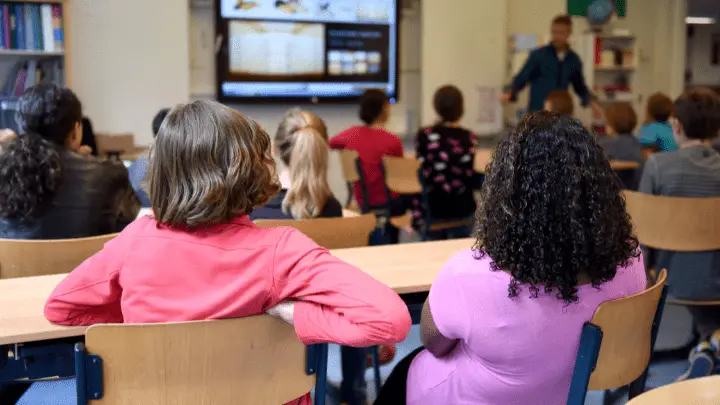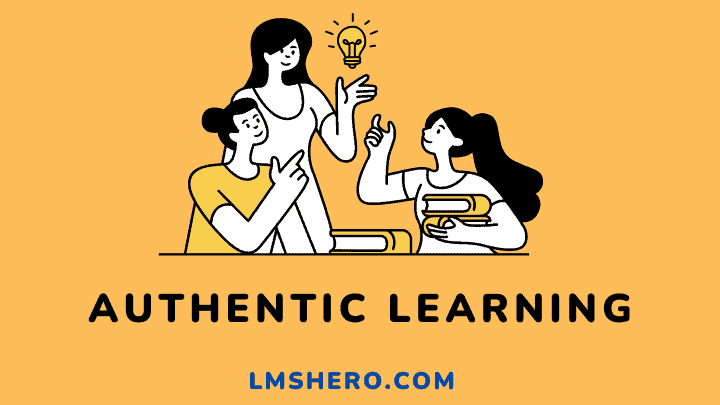Authentic learning is a new way of thinking about education, and it’s slowly but surely gaining traction in the world of American educators.
It’s a way of educating that values experience, process, self-direction, and active engagement with the material. And it’s having a major impact on how people learn.
This article will discuss the definition of authentic learning, its benefits, and how educators can implement it in their classrooms.
What is authentic learning?
Authentic learning is when students can connect what they learn in the classroom to the real world.
It’s when they understand what they’re learning applies to them, and they can use that knowledge to achieve their goals. Authentic learning is not just about getting good grades.
It’s about developing the skills and knowledge to help you succeed in your community roles, career, and life.
In today’s complex world, learning meaningful and practical things is more important than ever.
When educators facilitate authentic learning, students can explore their interests and strengths meaningfully and build upon their knowledge and skills. The resulting education is not only relevant but also enduring.
What is the importance of authentic learning?
1. It prepares learners for the real world
It is no exaggeration to say that the world we live in today is a result of the education we’ve given our children.
Today, more than ever, it is essential for schools to provide the best possible learning opportunities, so their students are ready to succeed in the real world.
Authentic learning is a type of teaching that focuses on providing students with experiences as close to the real world as possible.
It also helps students develop relationships, which is critical in building successful careers.
2. It helps students make informed career choices
Authentic learning helps students make informed career choices. With this type of learning, students can connect what they learn in the classroom to what they can apply in their careers.
Exploring different fields allows them to find what interests them and maximize their chances of securing a job matching them. This ensures they can make informed decisions, regardless of their future career.
This type of learning allows students to develop a sense of ownership over their education, which leads to better engagement and retention.
3. Critical thinking and problem-solving skills
Authentic learning is the key to unlocking the potential of students. It helps them develop critical thinking and problem-solving skills essential for success in today’s economy.
Furthermore, it allows students to gain relevant experiences relevant to their lives and careers.
They can learn in a participatory and interactive way to feel engaged in the learning process. And they can learn in a suitably challenging setting so they don’t become bored or frustrated.
4. Students are exposed to different perspectives, settings, and activities
Authentic learning is more than just attending lectures and reading textbooks. It’s the opportunity to engage in hands-on activities that equip students with the skills and knowledge they need to become successful citizens.
For example, a student who watches a political debate video as part of her history course would not be as prepared as one who attends a heated town hall debate.
Authentic learning helps students to expose themselves to different perspectives, settings, and activities. It helps them to become more confident and effective problem solvers.
Tips for instructors who want to implement authentic learning in classrooms

1. Get to know the students
One of the most important ways to get to know your students is to get to know their dreams and passions.
When you know what interests them, you can help them find resources and connect with other students who share their interests.
For example, if one of your students is passionate about cooking, you could help them find recipes or cookbooks that match their interests.
Likewise, if a student is interested in music, you could recommend jazz recordings or bands that appeal to them.
Educators can create a more authentic learning environment by getting to know their students personally.
2. Provide meaningful reasons for learning activities
There’s no question that traditional lectures and textbooks are a significant part of classroom instruction. But is it the only way to teach?
In today’s competitive world, there are many ways to provide students with the knowledge they need to succeed.
One way is through practical learning methods, such as group work, experiential learning, and hands-on learning.
Providing specific examples or proving points through evidence can also help make the lesson more engaging and memorable.
These methods give students meaningful reasons for learning, which helps them retain information better and achieve better results.
3. Act as role models for students
The success of any authentic learning environment depends on the educators who lead it. When you teach, you model what is expected of your students.
You must be mindful of your messages to your students and the world around you. Your actions and words reflect upon us and may impact the people we encounter daily.
One way to promote authentic learning is to act as a student role model. Educators must project an image of trustworthiness, respect, and professionalism.
If you want them to see you as a leader who respects and values their abilities, you need to behave in a way that reflects them.
4. Learn how to give constructive feedback
Giving feedback is an important part of any instructor’s job, but it can be challenging to do it effectively.
The best way to give feedback is to learn constructive feedback. The tips in this article will help you do that.
You should also try to give feedback promptly. If you wait too long, the student may forget what you said or think that they did something wrong.
Feedback should be given immediately after the student has done something, not later when they feel more frustrated.
Finally, make sure your feedback is genuine. Your student won’t either if you don’t believe what you’re saying. And if your feedback isn’t genuine, it won’t be effective.
5. Quality assessment
Quality assessment is one of the many important tips that instructors who want to implement authentic learning in their classrooms.
In addition, quality assessment can identify areas where students fail to meet the class standards and help instructors make necessary curriculum changes.
By constantly evaluating and assessing the quality of teaching, instructors can ensure that their students receive the best possible education.
FAQs
What are the characteristics of authentic learning?
The major characteristics of authentic learning are real-world applications of tasks and mastering concepts.
What is the outcome of authentic learning?
Authentic learning results in individuals developing their skills and knowledge in a meaningful, impactful, and practical way.
Is authentic learning achievable?
Yes, it is achievable. It starts with deciding to make learning better and more impactful.
Final thoughts
Authentic learning is about going beyond the standard teaching and learning methods to connect with learners on a deeper level.
This can result in more meaningful, lasting learning experiences for students. When learning is authentic, it engages the whole person, not just the intellectual or knowledge parts of them.
Authentic learning requires educators to be attentive to their own emotions and feelings, as well as the emotions and feelings of their students.
Personalized learning is also one way to implement authentic learning, giving students control over the experience.
Thanks for reading.






